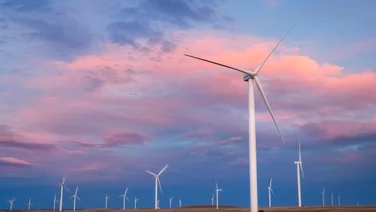- Carbon offsetting has become a way for large corporations and businesses to reduce their carbon emissions
- It takes an average of 20 years for tree saplings to become viable for offsetting carbon
- Ninety percent of the offsets sold by the world’s biggest provider did not actually reduce emissions
Carbon offsetting has become popular with companies that want to reduce their carbon emissions.
It’s particularly popular with airline companies, but a lot of large corporations, such as Microsoft, use offsetting carbon processes. Some governments have even been looking to carbon offsetting to help meet emission reduction targets.
But what exactly is carbon offsetting, and why might it not always be effective? We’ll give you seven reasons why below, and tell you about some big companies that have incorporated carbon offsetting into their sustainability strategies.

What is carbon offsetting?
Carbon offsetting is the term used for when an individual, business or country compensates for the emissions they produce by funding schemes or projects. It’s worth adding that these schemes and projects are ‘supposed’ to be used to reduce emissions, a process which is called purchasing ‘carbon credits’.
The idea behind this process is that, by funding activities that reduce carbon emissions, you can ‘cancel out’ the emissions you produce.
Common types of carbon offsetting schemes include reforestation projects, renewable energy development, and research into carbon capture technologies.
The organisations that run carbon offsetting projects calculate the amount of carbon that’s reduced or avoided through their activity. The amount is then usually verified by a certified third party, who sells them as carbon credits.
Does carbon offsetting work?
Carbon offsetting doesn’t work in most cases. In fact, some of the most popular programmes have been proven not to reduce as much – if any –carbon dioxide (CO2) as they promise.
The main reason why carbon offsetting doesn’t work is because it’s difficult to predict how much CO2 will be saved through a given project.
This means the estimates used to calculate carbon credits are often overly generous. In short, not as much carbon is actually being reduced as we think.
But there are many other issues with carbon offsetting, which we’ll get into in the following sections:
Carbon offsetting is often difficult to measure and quantify
Carbon offsetting relies on the assumption that an equivalent – or greater – amount of CO2 is being removed than the amount being produced. But in most cases, these projects overestimate their impact.
This is because there’s no standardised system for determining what counts as a carbon offset, or how to measure it. It’s also because it’s difficult to predict what will happen in the future.
It’s difficult to know how much CO2 is being offset. Businesses, individuals, and countries should focus their plans on actually reducing emissions, rather than offsetting them.
Some carbon offset projects would have happened anyway
Carbon offsets don’t count if they would have happened anyway, without the scheme. To put it another way, they need to be in addition to ongoing environmental plans happening in the world.
The study into CMS by the European Commission looked at just that and found that “most energy-related project types (wind, hydro, waste heat recovery, fossil fuel switch, and efficient lighting) are unlikely to be additional”. This was one of the areas where the CMS offsetting program failed to make an impact.

Carbon offsetting doesn’t start to work as quickly as it should
Given the urgency of the climate crisis, many carbon offsetting critics argue that measures, such as planting trees (the most popular type of carbon offsetting) won’t help reduce emissions as quickly as you’d expect.
Greenpeace reported: “A newly planted tree can take as many as 20 years to capture the amount of CO2 that a carbon offset scheme promises. We would have to plant and protect a massive number of trees for decades to offset even a fraction of global emissions.”
Trees planted now would only become viable carbon offsets around 2050, the deadline set for reaching net zero emissions in the 2015 Paris Agreement.
Most carbon offset schemes don’t last
In order to have an impact on the environment, a carbon offsetting measure needs to last. But unfortunately, a lot of carbon offsetting schemes don’t stand the test of time.
Trees are particularly vulnerable to destruction – either natural or manmade – which is why it’s worrying that planting them is the most popular form of carbon offsetting.
There are lots of cases where carbon offsetting schemes involving reforestation or preservation have failed over time. For example, a carbon credit programme based in Cambodia saw forest coverage in a preservation area decrease by 42% across the duration of the programme, according to ProPublica.
Carbon offsetting is used as an excuse to not reduce emissions
Carbon offsetting is seen by many as a free pass to not focus on reducing emissions. The ‘easy’ way out, if you will.
The European Commission sums up this sentiment in its description of the failed CMS scheme. It defines it as a scheme that allowed “industrialised countries with a greenhouse gas reduction commitment […] to invest in projects that reduce emissions in developing countries, as an alternative to more expensive emissions reductions in their own countries.”
Essentially, for many big corporations and governments, it’s easier, and cheaper, to push money at carbon offset schemes, rather than doing the work to reduce their own emissions.
Most carbon offset schemes shift the responsibility
A lot of carbon offsetting projects shift the burden of responsibility from wealthy developed countries – who produce the most emissions – to low-emitting developing countries.
Not only is passing the burden onto countries with lower carbon footprints a form of environmental injustice, but it also makes it much harder to actually offset carbon emissions.
That’s because high emitting countries produce lots of emissions for a reason, they have developed infrastructure that runs on fossil fuels. Low-emitting countries are still in development, and they want to keep developing. And developing a healthy economy with reliable infrastructure is a stronger financial and social-political incentive than receiving funding to oversee a carbon offsetting scheme.
Carbon offset schemes can harm local populations
The unethical nature of some large offsetting schemes should also make us question their worth. Carbon offset projects – often funded by the wealthier countries around the globe – can sometimes harm local indigenous communities, resulting in violent conflicts, food insecurity, and displacement.
One famous case of this happened in Kenya. A report titled “Blood Carbon” by Survival International details how a carbon offset project that was registered by Verra disrupted the traditional farming practices of indigenous groups, endangering their income and food resources.
Is carbon offsetting a form of ‘greenwashing’?
Carbon offsetting can be a form of greenwashing if a company relies solely on carbon credits to appear environmentally friendly, and uses this as a substitute to actively reduce its emissions.
Advertising that claims a product or company is ‘carbon neutral’ can mislead customers into thinking the company is reducing their carbon footprint, when they aren’t.
This is the reason why the EU parliament voted to ban the use of unsubstantiated generic terms, such as ‘climate neutral’ from advertisements in March 2023.
But that’s not to say that investing in carbon offsetting is a bad thing, and that the practice should be abandoned.
When done ethically, carbon offset programs can have positive effects, such as protecting biodiversity, or increasing the amount of green energy being produced. But these positive effects can’t counteract continuous high levels of emissions.
Which companies have tried offsetting their carbon?
Multiple companies, both large and small, have tried carbon offsetting, including Google, Shell, and British Airways.
The good thing is that none of the companies we discuss below rely solely on these offsetting processes to reduce their emissions. But it’s important to remember that some businesses, such as airlines or gas companies, can only reduce their emissions up to a point, since their business models are based on high-emission fossil fuels.
Let’s take a more detailed look at how Google, Shell, and British Airways have used carbon offsetting in the following sections.
Google is one of the largest companies to use carbon offsetting as a way to reduce its emissions. The company claims to be ‘carbon neutral’ – meaning they compensate for all their carbon emissions – since 2007.
That being said, it’s true that Google is making significant efforts to reduce its emissions, and is aiming to run entirely on green energy by 2030. Their white paper also states that carbon offsets are only used to compensate for unavoidable emissions, not as a substitute for reducing them.
You can find out more about this on our page UK companies: Who’s going carbon neutral?
Shell
Shell is another company that has reportedly spent more than £367m on carbon offsetting projects. As an oil company, there’s only so much Shell can do to reduce its emissions, and one solution it’s found is to offer carbon credits to its customers.
But it’s achieving this mainly through ‘nature-based projects’, such as reforestation, which are known to fail based on the difficulty of maintaining forests in the long term.
British Airways
British Airways has committed to becoming carbon net zero by 2050. As part of that strategy, like Shell, it offers customers the option to offset the carbon emissions produced by their flights.
Once again, it’s unlikely that these offsets will actually reduce aviation emissions, especially since airline customer uptake for carbon credits is historically around 1%.
But as an airline, there’s not much more British Airways can do in the short term, besides halt all operations and flights, which seems unlikely. A form of sustainable aviation just hasn’t been invented yet.
You can find out about how the UK government is planning to tackle aviation emissions by reading our analysis of their Jet Zero Strategy.
Summary
- Carbon offsetting has become popular with companies that want to reduce their carbon emissions
- The idea behind this offsetting is that, by funding activities that reduce carbon emissions, you can ‘cancel out’ the emissions you produce
- It usually takes between 31 and 46 trees to offset one tonne of CO2, according 8 Billion Trees. But it’s important to remember that this will depend on the size of the trees, and where they’re planted
- Young trees are smaller, so they won’t absorb as much CO2. Likewise, planting non-native trees in an area can damage the local ecosystem, resulting in less vegetation, and less CO2 being absorbed
- Multiple companies, both large and small, have tried it, including Google, Shell, and British Airways.







